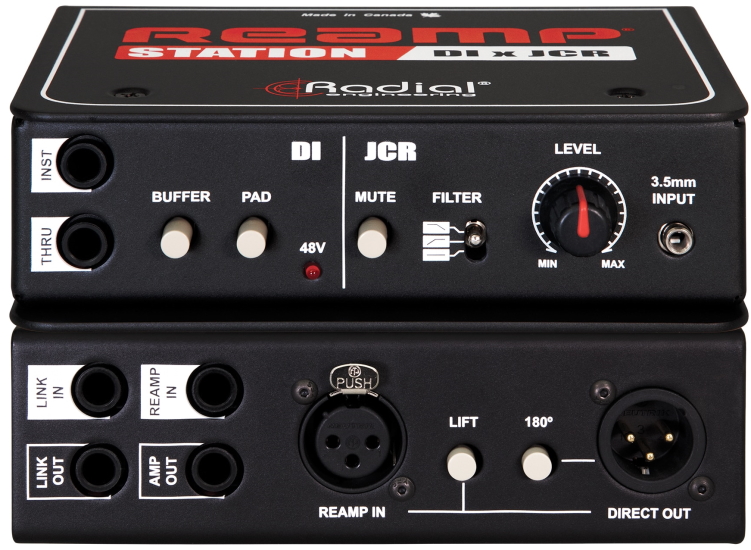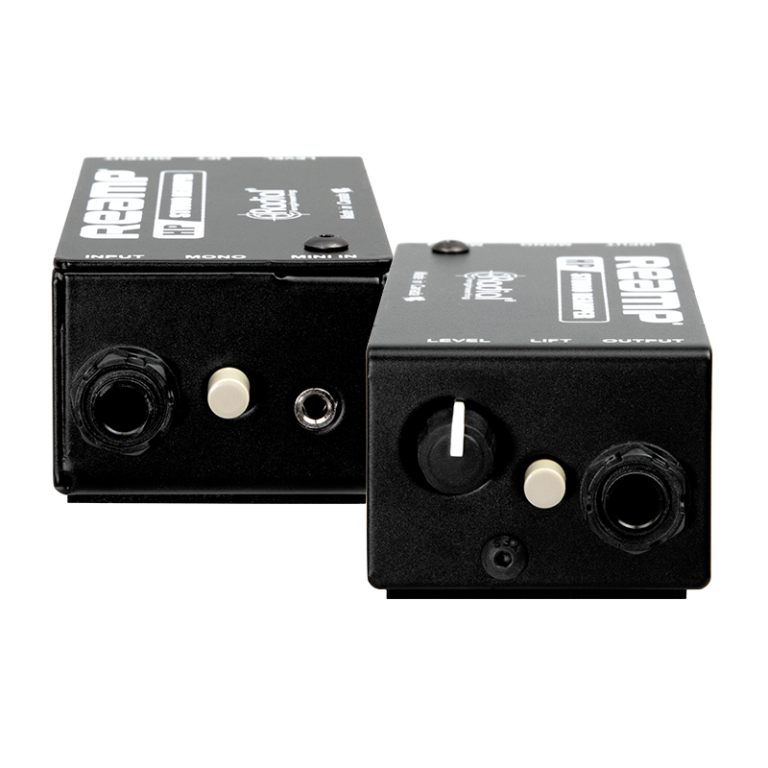

All three models allow you to very effectively insert instrument-level stompbox pedals into balanced signal paths for use as audio effects in your mixes alongside your favorite rackmount processors and plugins.

The EXTC-Stereo is a stereo stompbox reamper, following the 500 Series-format EXTC 500 reviewed in October 2011, and the standalone, direct box-style EXTC-SA. Radial designs and builds devices that you didn’t know you needed-until now! This month we look at the ins and outs of the new EXTC-Stereo. Want stereo stompboxes in your mix? You need this! Radial Engineering is very highly respected for its robust and quiet direct boxes and reamping devices (Radial owns the Reamp brand). The fact that Radial has packed so much versatile circuitry into a box not significantly larger than the J48, along with the Reamp JCR, is truly impressive.The following is written by Paul Vnuk Jr. The quality of the Reamp Station’s DI was outstanding, and no surprise there, given my experience with Radial DI boxes. Over several reamping sessions, I sent signals from the Tascam and RME unit’s main outputs to the Reamp Station, as well as from each unit’s headphone outputs, to the Reamp HP.ĭestinations for reamping included a Fender ’68 Custom Princeton Reverb comboand a variety of effect pedals, among them an EarthQuaker Devices Special Cranker, a Gurus Echosex 3 Binson Echorec pedal and a Chase Bliss CXM 1978 Vintage Studioverb. DIMENSIONS: 5 7 /8” x 4 1 /8” x 1 3/4” (LxWxD)įor testing purposes, I tried both units to DI a variety of electric guitars and acoustic-electric guitars into my DAW via a Tascam Model 12 mixer as well as an RME Fireface 800 digital audio interface.īoth Radial reampers provide a path for connecting audio recordings to effects pedals.Reamp: 3.5mm audio input, Reamp in 1/4” TRS and XLR, amp out, link in, link out Reamp: Mute, filter (high-cut/low-cut/flat), level, ground lift I/O Direct Box: Instrument, thru, direct out. CONTROLS: Direct Box: Buffer, pad, 48V phantom power indicator, 180° polarity switch, ground lift.These include 1/4-inch TRS and XLR input for connecting to the line-level outputs of your recorder, an amp output to feed the resulting instrument-level signal to your amp, and link in and out jacks to connect multiple Reamp devices for when you want to send one signal to more than one amp.Īlso here is a ground lift to eliminate hum and buzz from ground loops.Īll in all, the Reamp Station is a compact but feature-packed device that leaves no reamping problem unsolved. Speaking of the back panel, this is where you’ll find the remaining reamp features.

The JCR’s front-panel features include a 3.5mm input that lets you reamp signals from mobile devices and handhelds a level control a three-position filter with settings for high-cut, low-cut and flat frequency response and a mute switch that cuts the signal to the 1/4-inch amp output on unit’s back panel.

Once your guitar part has been recorded, the Reamp Station’s JCR comes into use with a custom-wound USA-made transformer that converts line-level signals to instrument level. The DI’s features continue on the back panel and include a balanced XLR output for connecting a recording interface or mixer, and a 180˚ switch that reverses polarity at the direct output to reduce phase cancellation when the DI is combined with mic’d amp.Ī custom-wound USA-made transformer converts line-level signals to instrument level


 0 kommentar(er)
0 kommentar(er)
